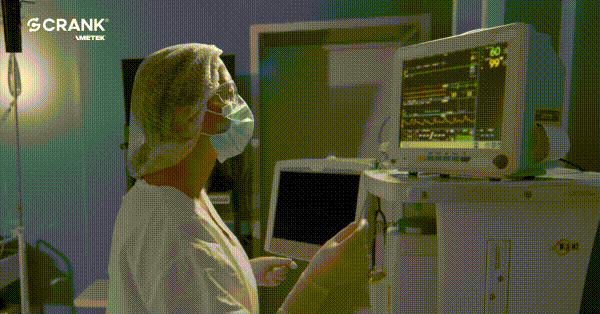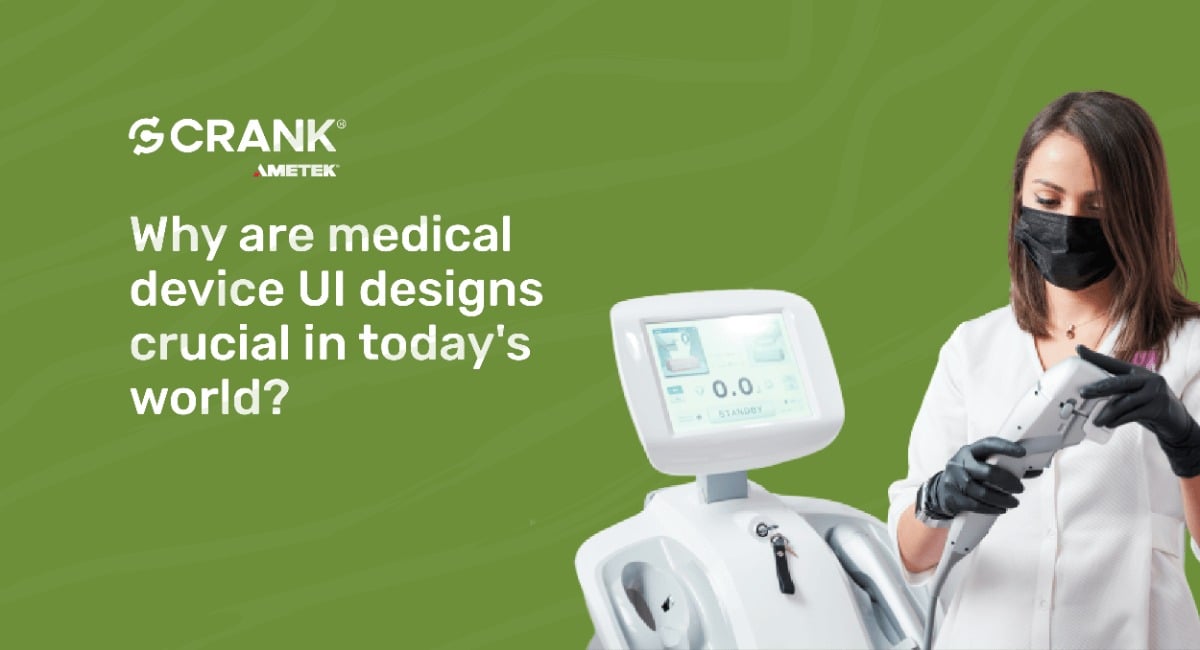The medical device industry is growing at a rapid pace. It is among the world's top 10 most prominent sectors, predicted to grow from $495.46 billion in 2022 to $718.92 billion by 2029 at a CAGR of 5.5% during the forecast period (2022-2029). It is one of the most integral industries to focus on and improve upon.
In medical devices, there is no secret that user experience is vital to ensure that doctors & patients have the best possible experience. This is why the UI designs of medical devices are so important.
A recent study found that user-centered design (UCD) was the most effective way to improve healthcare UI delivery. UCD is not just about how users interact with technology but also how they perceive it. To ensure they feel like they're in safe hands, healthcare professionals must consider how users interpret their actions and responses. As such, UI design ensures patients feel safe and understood.
Understanding UIs and medical equipment relation
UI designs are crucial to the healthcare industry because it helps healthcare professionals communicate with their patients effectively to clearly understand what's happening with their bodies and health problems.
However, the importance of having a great user interface design in medical devices is more than just accepting modern-day trends. It is essential to know that this is one of the most important aspects of a product, and the manufacturer must understand the importance of creating a great user interface design.
The medical device UI should be able to communicate its message clearly, while also being efficient and easy to use.
But to build such devices, the manufacturers need to understand the exact needs and workflow of the device, which will help them create better devices with easy-to-use UIs, thus improving the treatment process.

The challenges that manufacturers face while designing a medical device UI
Creating a medical device user interface that adds value to end users' experience and captures good market share is difficult because medical devices are a life-critical segment. Building one requires aligning it with healthcare regulatory requirements, solution specifications, and end-user requirements.
As a result, it seeks a holistic approach rather than an isolated part of the design process. Here are a few challenges that manufacturers incorporate while designing a medical device UI:
- Building a user interface that works and intuitively as a smartphone
- On-time delivery and time to market. There are different rules and standards that must be met in different regions for the development of medical devices. Regulatory bodies oversee these requirements; hence, it may take time for devices to reach the market
- Designing and redeveloping the user interface would be a constant cycle throughout the product's lifecycle. The UI development tool had to support this continuous process
- Finding a solution that supports the required operating system
Ways to improve medical device user experience and adoption
1. UIs that support logical workflow
We have recently witnessed a pandemic where getting healthcare facilities was challenging, and it was due to the increased demand for healthcare facilities. Enhancing the medical devices' user experience can reduce the time taken for patient treatment. The devices should have no difficulty locating frequently used functions, few clicks, and precise results for users.
2. Keeping the design simple and focusing on the most important features
Designing a UI is always exciting, but there are chances that the result you get after designing the UI is not what you have thought. This can happen when developers need to code your UI elements to get the final product. A situation like this can be a disaster and reworking the designs or codes may take lots of time.
A framework that allows you to design and develop the graphical user interface of embedded medical devices can be a savior.
Trusted by several brands like Coca-Cola, Zepp Health, GE, and many others, Crank Storyboard is a GUI design and development framework that has helped several companies to build simplistic yet distinctive UIs.
3. Allow the User to Customize the Home Screen and Save Favourites
It's a fact that a friendly and intuitive medical device user interface always wins, while an overly complex interface will lead to frustration. The ability to log in and see one's unique profile and configuration can significantly help. It may seem a minor point that can be an essential factor for clinicians who like to organize their home screens based on their workflow and workload.
4. Icons with labels
Adopting an icon approach in UI designs of medical devices can reduce visual complexity and eliminate. The advantage of icon-only labels is their clean appearance, which may lead to misinterpretation, especially in medical device UIs where control labels may not have direct pictorial counterparts.
To avoid confusion: Always pair icons with concise text to clarify the control's function. Use a clean, San Serif typeface and simple icons to help reduce visual complexity.
How Storyboard can help you create a simplistic & rich UI
Medical device manufacturers must provide user experiences that streamline complex operations into clear and safe practices in response to rapid developments in patient diagnostics, collaborative care, and connected systems.
No matter what medical GUI you need, Storyboard embedded GUI development framework is a proven solution for GUIs requiring high reliability and ease of use.
Crank Storyboard has some great features, like:
- In Storyboard, designers and developers work together to create medical user interfaces that are simple, powerful, and reliable for low-power and low-cost platforms
- Storyboard lets you iterate designs quickly and easily by importing and reimporting content from Photoshop
- You need not worry about the design changes as you do not have to start from scratch whenever there is a design change
- Previously declared application logic and event bindings remained intact, and Storyboard managed the new assets
- Once you are okay with the designs, you can start the integration process
Storyboard's fast iteration and collaboration capabilities allow parallel work without compromising design or underlying code. As a result, the user interface design for the medical device is user-friendly, aesthetically pleasing, and high-performance.
You can easily create rich embedded UIs from concept to production using Storyboard; if you're not already using it, you can have a free trial.
.png?width=180&height=67&name=Crank-AMETEK-HZ-Rev%20(4).png)


